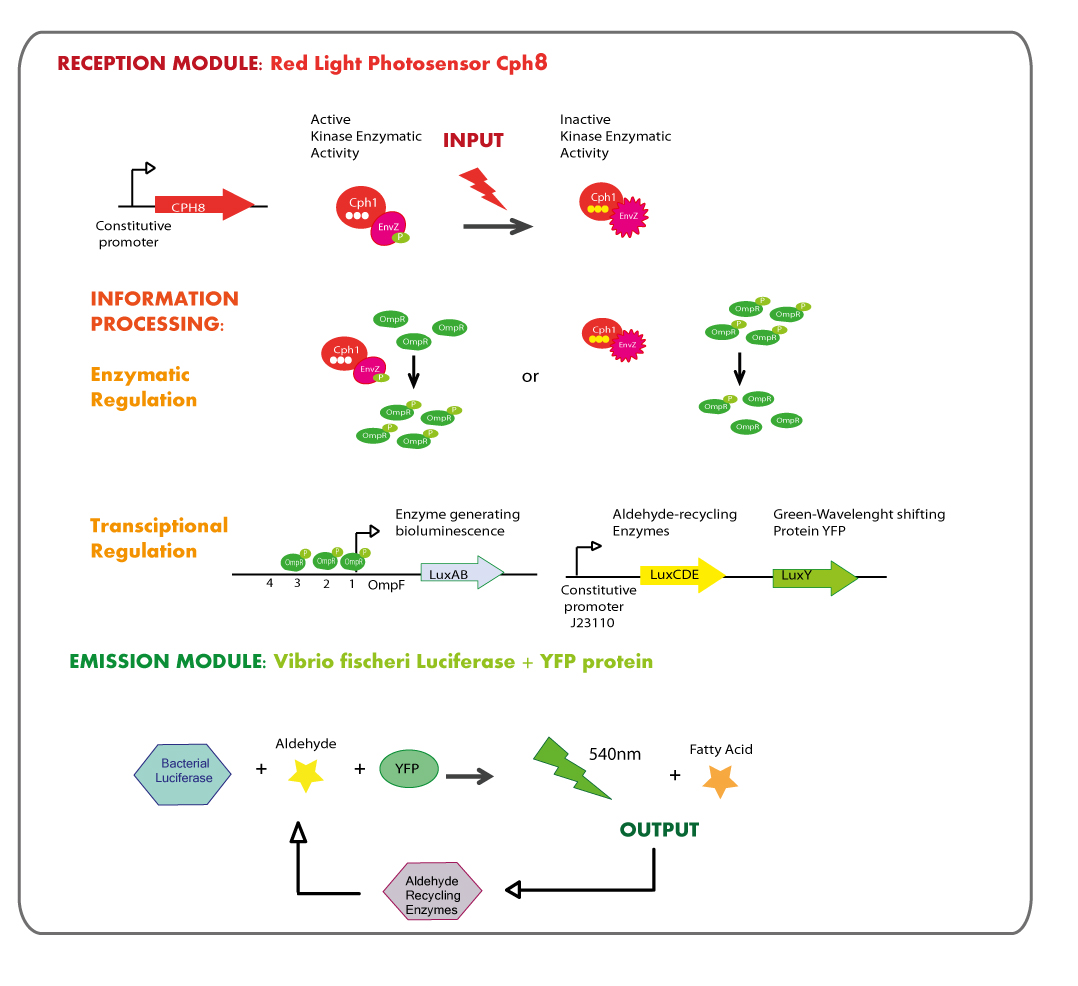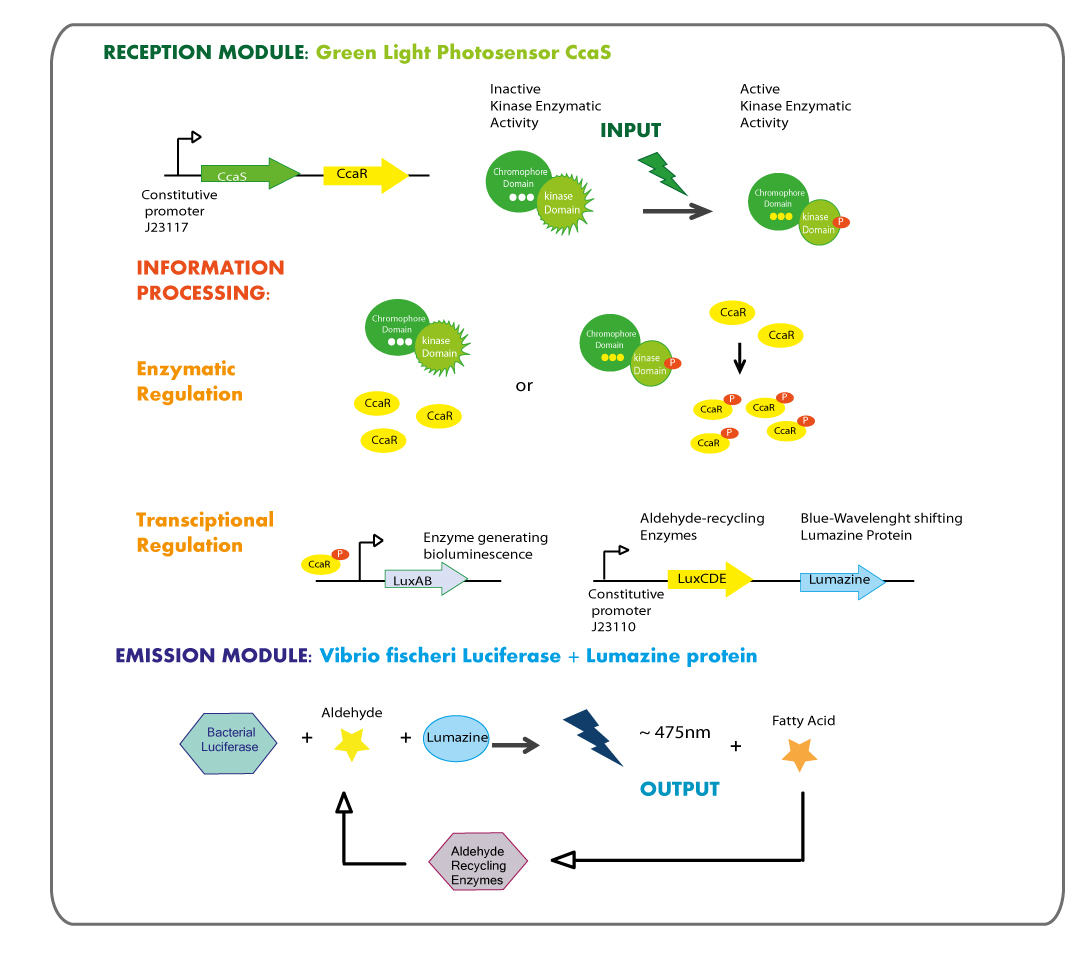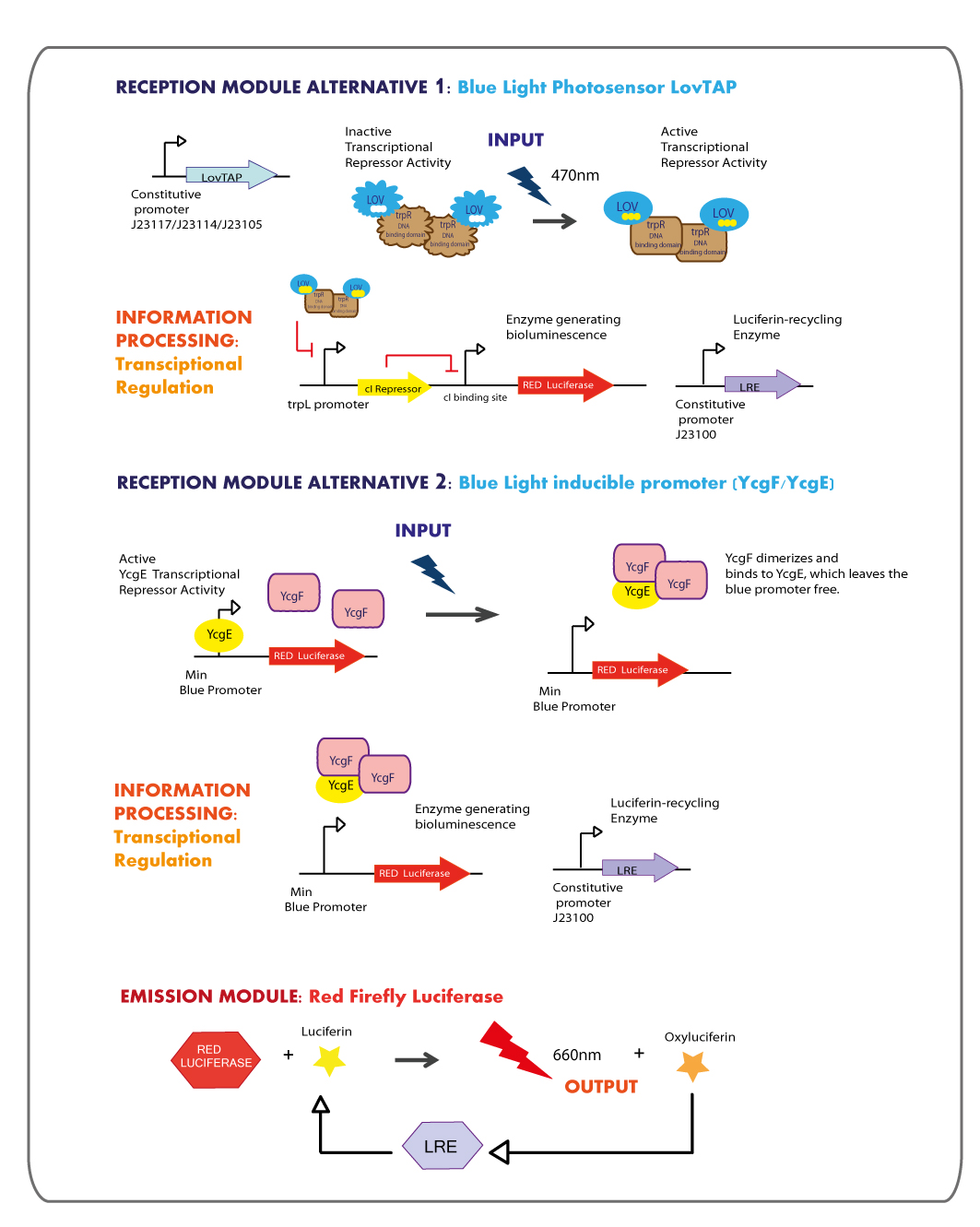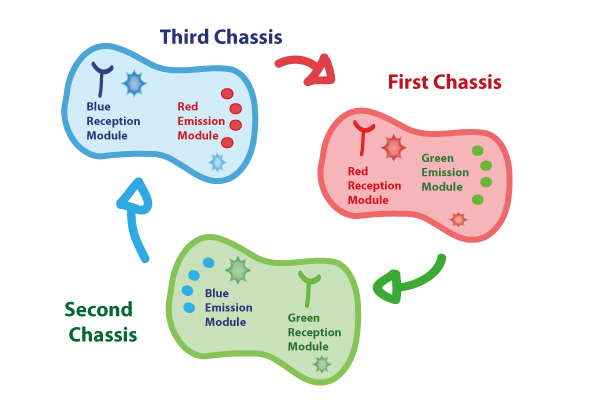Team:UNAM-Genomics Mexico/Modules/In vivo
From 2010.igem.org
Kurupaclau (Talk | contribs) |
Kurupaclau (Talk | contribs) |
||
| Line 33: | Line 33: | ||
[[Image:InRED-outGreen.jpg|thumb|center|680px| '''First Chassis''': Red Light reception module coupled to Green Light emitter module.]] | [[Image:InRED-outGreen.jpg|thumb|center|680px| '''First Chassis''': Red Light reception module coupled to Green Light emitter module.]] | ||
| + | |||
| + | '''Reception module: Blue Light Photosensor LovTAP''' | ||
| + | |||
| + | Working in this chassis, we decided to use as blue light receptors: LovTAP photosensor and the native blue light inducible promoter from E.coli. | ||
| + | |||
| + | OBJECTIVES: | ||
| + | |||
| + | *Construct an improved version of the LovTAP photosensor device under the regulation of different constitutive promoters, due to the previous version of LovTAP designed by 2009 Lausanne team didn´t have a differential behavior under the inverting regulator sensitive to LacI and CAP protein, their results showed that the expression levels of LovTAP didn’t show differences to the induction with IPTG. As well, we included a punctual mutation to change the ILE427 by a PHE427, as was proposed by the model results of the team iGEM09_EPF-Lausanne. With this mutation LovTAP should react faster and the conformational change should be more stable (the protein stays in the active form for longer, under light induction). | ||
| + | |||
| + | *Characterize LovTAP reporter systems, both repressor and activator activity. | ||
| + | |||
| + | The structure of the device is designed as follows: | ||
| + | |||
| + | |||
Revision as of 23:56, 26 October 2010

Coupling together Biological Chassis
In order to enable the light based communication between bacteria, we have designed a tertiary cycle of different bacteria chassis, assembling each module of reception and emission to construct a light-based feedback loop of red-green-blue light, which will make the proof of concept of communication over distance and proper signal decoding.
First Chassis
Input: Red light
Output: Green light
Reception module: Blue Light Photosensor LovTAP
Working in this chassis, we decided to use as blue light receptors: LovTAP photosensor and the native blue light inducible promoter from E.coli.
OBJECTIVES:
- Construct an improved version of the LovTAP photosensor device under the regulation of different constitutive promoters, due to the previous version of LovTAP designed by 2009 Lausanne team didn´t have a differential behavior under the inverting regulator sensitive to LacI and CAP protein, their results showed that the expression levels of LovTAP didn’t show differences to the induction with IPTG. As well, we included a punctual mutation to change the ILE427 by a PHE427, as was proposed by the model results of the team iGEM09_EPF-Lausanne. With this mutation LovTAP should react faster and the conformational change should be more stable (the protein stays in the active form for longer, under light induction).
- Characterize LovTAP reporter systems, both repressor and activator activity.
The structure of the device is designed as follows:
Second Chassis
Input: Green light
Output: Blue light
Third Chassis
Input: Blue light
Output: Red Light light
Tertiary cycle
With the previous chassis assembled, the interchange and processing of information go through an activation signaling cascade, that is illustrated in the next image:
iGEM
iGEM is the International Genetically Engineered Machines Competition, held each year at MIT and organized with support of the Parts Registry. See more here.Synthetic Biology
This is defined as attempting to manipulate living objects as if they were man-made machines, specifically in terms of genetic engineering. See more here.Genomics
We are students on the Genomic Sciences program at the Center for Genomic Sciences of the National Autonomous University of Mexico, campus Morelos. See more here.This site is best viewed with a Webkit based Browser (eg: Google's Chrome, Apple's Safari),
Trident based (Microsoft's Internet Explorer) or Presto based (Opera) are not currently supported. Sorry.
 "
"



